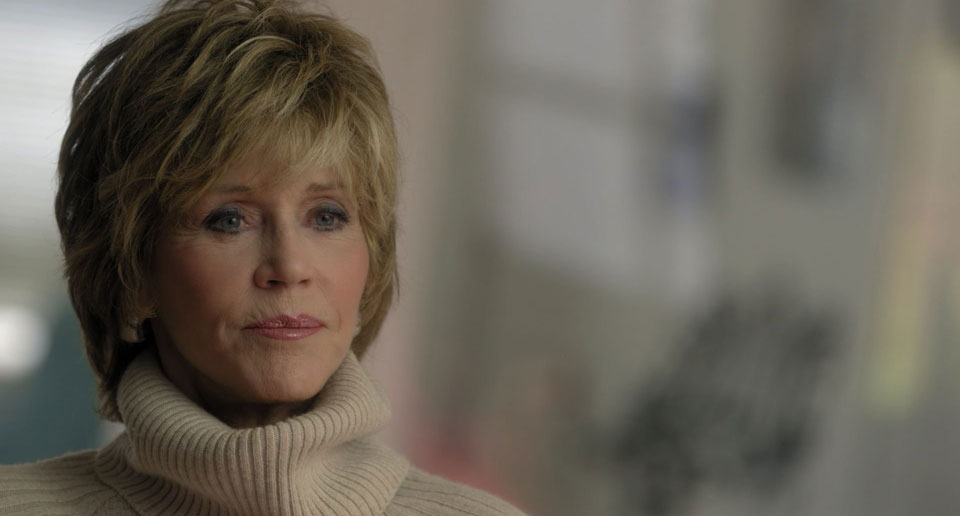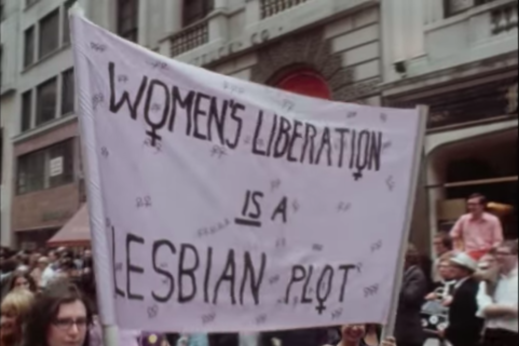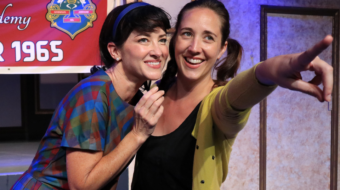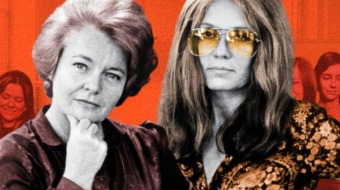
In a perfect world, the documentary Feminists: What Were They Thinking would merely be a nostalgic film that walks down memory lane, when women of the 1970s were fighting for equal rights and an acknowledgment that this struggle is a thing of the past. Yet, the new Netflix film comes during a time of political turmoil, where the President of the United States boldly taunts sexual assault survivors and calls women names like “horseface,” the Republican-led government swears in a Supreme Court Justice that is part of a right-wing strategy to do away with Roe v. Wade, and the overall fight for gender equality is still that—a fight.
Feminists: What Were They Thinking is a timely and relevant film that uses photography, archival film clips, and testimony from contemporary women activists that helped shape the second wave of a movement that continues to evolve and learn from its progress and setbacks. The movie serves more like a glimpse as opposed to a thorough look, but it is needed all the same.
Sponsored by the International Documentary Association, the film is directed by Johanna Demetrakas, and starts from the viewpoint of looking back through a book of photographs by artist Cynthia MacAdams, published in 1977, that contained a number of women who participated in the feminist movement at that time. As MacAdams explained in the movie, she was compelled to take the photos because, “women looked different because of feminism, and I wanted to see if that [difference] would show up in pictures.”
From there, the one hour and twenty-six-minute film catches up with many of the women, including celebrity feminist icons Lily Tomlin, Jane Fonda, and Michelle Phillips, who posed for the book, as they tell their stories and reflect on what is needed today to achieve gender equality.
There’s a wide range of women featured in the documentary, including professors, activists, actors, historians, and writers. It also includes younger women, not yet born in the 1970s, to give their views of how this era influenced them, and the struggles they still face today. This mixing of generational testimonials, along with newer video clips from the recent Women’s March, drives home one of the prominent messages in the film—that women of today face many of the same hardships women forty years ago dealt with.
There’s a callback to famous books, such as The Female Eunuch, and Women and Madness, that helped to pioneer what is known as the second wave of feminism. This being defined as an era of about two decades beginning in the 1960s that focused on issues such as sexuality, family, the workplace, and reproductive rights. This wave expanded on what is known as first wave feminism, that mainly focused on voting and property rights for women in the earlier part of the twentieth century. “The personal is the political” was a rallying cry that defined second wave feminism, and is exemplified in the film with pictures of the women of that time displaying their body, art, and sexuality.

The documentary is at its most interesting when it provides space for talking about topics often shied away from when reminiscing about the past. For there are times that nostalgia can lead to historical amnesia, or rose-colored views, on past movements.
In Feminists: What Were They Thinking, divisions dealing with race that riddled the movement four decades ago are allowed to surface. Activist, radio host, and historian Margaret Prescod recalls a time during the first World Conference on Women in 1975 where Black women, and other women of color, dealt with pushback and silencing tactics from white women leadership when attempting to address issues dealing with forced sterilization of Black, Latino, and Native American Women. “We were told [speaking about these issues] would jeopardize [the larger movement],” Prescod explains in the film.
It’s a difficult topic, and it certainly doesn’t show second wave feminism in it’s best light. It’s a necessary topic to address today though, as many women of color, particularly Black women, are taking on leadership roles and running for political office in unprecedented numbers.
Highlighted also is the role art and entertainment played in creating a narrative around the struggles of women. Jane Fonda speaks about the popular film she starred in, Nine to Five, that focused on the troubles of working-class women. The documentary also features the journey of activist Judy Chicago, daughter of labor activist and Marxist Arthur Cohen, as she struggled to have her art recognized, along with the political pushback against her infamous piece “The Dinner Party,” which is considered the first epic feminist artwork.
One drawback of the film is that, although a considerable amount of time is given to women who identify as lesbian speaking of their experience and fight for LGBTQ rights, the film doesn’t make any effort to include trans women and the role they played in the social upheavals during that era. That might include the leadership role trans woman of color Marsha P. Johnson played in the well-known Stonewall Riots that launched the modern gay rights movement, or Sylvia Rivera, who was a founding member of the Gay Liberation Front and the Gay Activists Alliance. It seemed a missed opportunity for a film that speaks to the stereotypes and boxes women are often placed in due to male supremacy and patriarchy to not highlight trans women who helped in defying those stereotypes as well.
If you’re looking for an exhaustive look at second wave feminism, the documentary will seem lacking, but it does offer a chance to begin the conversation around sexism and liberation, and what that means in our present time. As Prescod notes in the film, there’s a need to “know how we move forward.” One way is by looking at where we’ve been, and Feminists: What Were They Thinking gives a slice of that.










